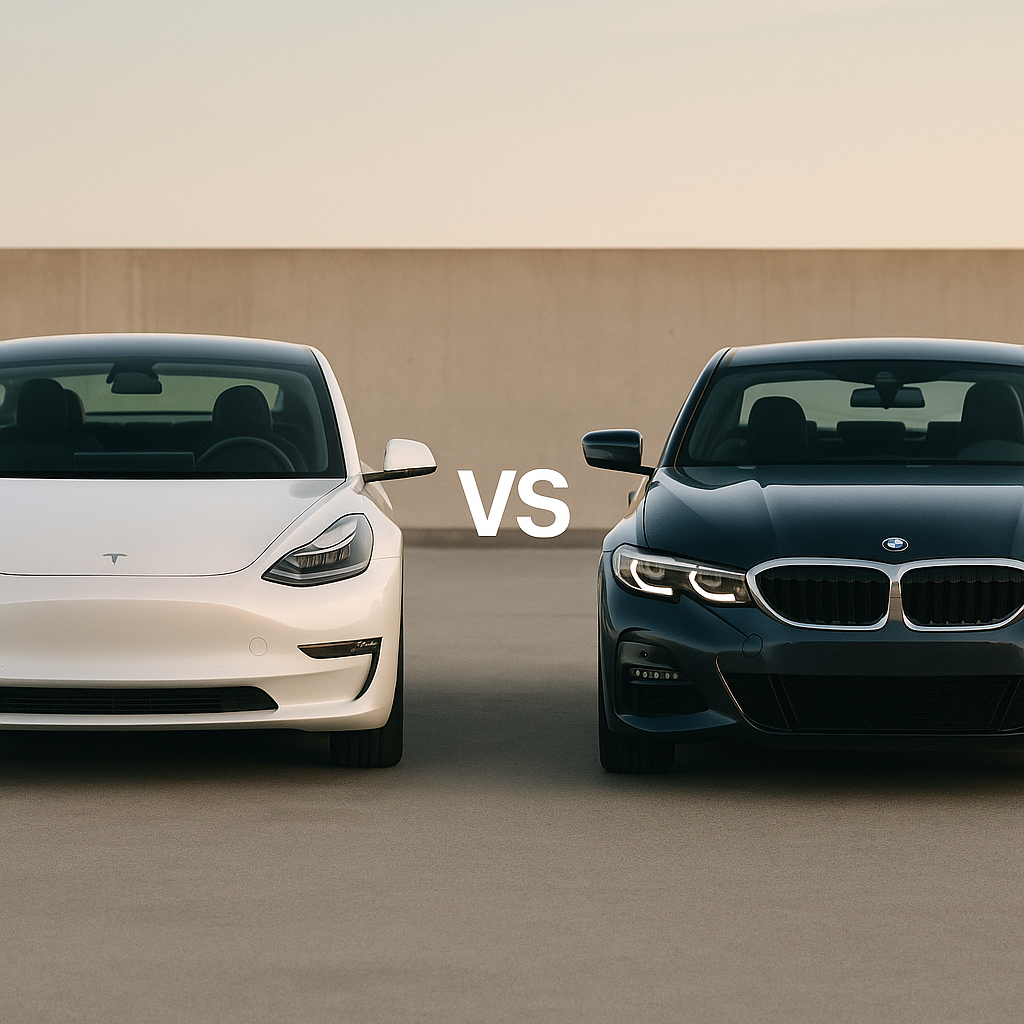Tesla vs BMW
When it comes to luxury automobiles, the debate between Tesla vs BMW remains a popular topic among enthusiasts and potential buyers alike. Both brands symbolize innovation, performance, and prestige but cater to different preferences and priorities. This article offers a detailed comparison of Tesla and BMW, focusing on various aspects such as technology, performance, design, and sustainability.
Brand Overview
Tesla is a pioneering electric vehicle (EV) manufacturer known for its cutting-edge technology, long-range batteries, and autonomous driving features. Founded in 2003, Tesla has rapidly grown to become a leader in the EV market, challenging traditional automakers with its innovative approach.
BMW, established in 1916, is a German luxury automaker with a rich heritage of producing premium vehicles that emphasize driving dynamics, craftsmanship, and engineering excellence. While BMW has a strong lineup of internal combustion engine (ICE) vehicles, it is increasingly investing in electric and hybrid models through its “i” series and other electrified offerings.
Performance and Driving Experience
- Tesla: Tesla vehicles, such as the Model S and Model 3, are known for their instant torque and quick acceleration. The Model S Plaid, for example, can accelerate from 0 to 60 mph in under 2 seconds, making it one of the fastest production cars globally. Tesla’s electric powertrain delivers a smooth, quiet ride with minimal maintenance requirements.
- BMW: BMW prides itself on the “Ultimate Driving Machine” tagline, offering vehicles that deliver precise handling, balanced weight distribution, and a sporty driving experience. Models like the BMW M3 and M5 are celebrated for their powerful engines and dynamic performance. BMW’s electric models, such as the i4 and iX, also provide strong acceleration but often emphasize driving engagement and chassis tuning.
Technology and Innovation
Tesla’s standout features include its Autopilot and Full Self-Driving (FSD) capabilities, over-the-air software updates, and a minimalist interior dominated by a large touchscreen interface. Tesla’s Supercharger network is another significant advantage, offering fast and convenient charging options for long-distance travel.
BMW integrates advanced technology across its lineup, including the latest iDrive infotainment system, gesture controls, and a suite of driver assistance features. BMW’s approach focuses on blending technology with traditional luxury, providing a more tactile and customizable user experience compared to Tesla’s minimalist design.
Design and Interior Quality
- Tesla: Tesla’s design philosophy centers on simplicity and modernity. The exterior is sleek and aerodynamic, while the interior is minimalist with few physical buttons. Materials are generally high quality, but some critics note inconsistencies in fit and finish compared to traditional luxury brands.
- BMW: BMW interiors are known for their craftsmanship, premium materials, and attention to detail. The brand offers a more classic luxury experience with comfortable seating, ambient lighting, and refined trims. Exterior designs are sporty yet elegant, often appealing to buyers who appreciate a blend of tradition and innovation.
Sustainability and Environmental Impact
One of the most significant differences in the Tesla vs BMW comparison is their approach to sustainability. Tesla’s entire lineup is electric, which eliminates tailpipe emissions and reduces dependency on fossil fuels. The company also invests heavily in renewable energy solutions and battery technology advancements.
BMW offers a range of powertrains, including gasoline, diesel, hybrid, and electric. Its electric and plug-in hybrid models contribute to reducing emissions, but its overall fleet still includes many ICE vehicles. BMW has committed to increasing its electric offerings and aims to achieve carbon neutrality by 2050.
Pricing and Value
Tesla’s pricing varies from more affordable models like the Model 3 to premium variants such as the Model S. While the initial cost can be high, the lower maintenance and fuel costs of electric vehicles may offer savings over time.
BMW vehicles generally carry a premium price tag reflecting their luxury status and engineering. The cost can vary widely based on model, options, and electrification level. BMW’s resale values tend to be strong, supported by the brand’s reputation and dealer network.
Frequently Asked Questions (FAQ)
- Which brand offers better electric vehicle options, Tesla or BMW?
Tesla currently leads in electric vehicle technology and range, but BMW is rapidly expanding its EV lineup and improving charging infrastructure. - Is Tesla’s Autopilot safer than BMW’s driver assistance systems?
Both offer advanced driver assistance, but Tesla’s Autopilot and Full Self-Driving features are more aggressive in automation. However, driver vigilance is essential with either system. - How do Tesla and BMW compare in terms of maintenance costs?
Tesla’s electric vehicles generally have lower maintenance costs due to fewer moving parts, while BMW’s ICE and hybrid vehicles may require more routine servicing. - Which brand has better resale value?
BMW typically holds strong resale value due to brand loyalty and dealer support, but Tesla’s demand and EV market growth are positively influencing its resale values.
Conclusion
The Tesla vs BMW comparison highlights two distinct approaches to luxury automobiles. Tesla excels in electric innovation, acceleration, and sustainability, making it a top choice for those prioritizing cutting-edge technology and environmental impact. BMW offers a more traditional luxury experience with refined interiors, driving dynamics, and a broader range of powertrains, appealing to buyers seeking a blend of performance and craftsmanship.
Ultimately, the choice depends on individual preferences and priorities. If you value all-electric driving and advanced autonomous features, Tesla is the clear leader. If you prefer a luxury vehicle with a rich heritage and versatile options, BMW remains a compelling option.
